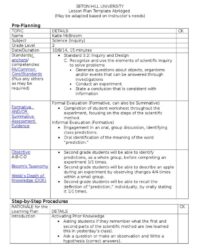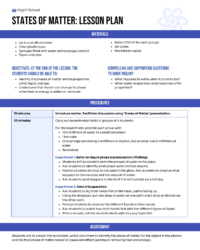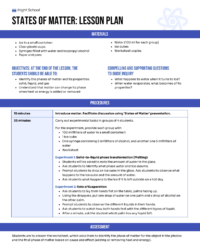In the dynamic world of education, engaging students isn’t just a goal; it’s a necessity. Especially in social studies, where topics can range from ancient civilizations to modern geopolitics, keeping learners actively involved is crucial. This is where the 5 E instructional model shines, offering a structured yet flexible framework that transforms passive listening into active discovery. It’s a method designed to guide students through a journey of inquiry, starting with sparking their interest and culminating in a deep understanding of complex concepts.
For educators seeking consistency and effectiveness, developing a robust 5 E lesson plan template for social studies can be a game-changer. Imagine having a go-to blueprint that helps you meticulously plan lessons, ensuring every “E” is addressed, fostering critical thinking, and promoting student-led exploration. This approach not only streamlines your preparation but also enhances the overall learning experience, making historical events, geographical patterns, and civic responsibilities come alive in the classroom.
Understanding the 5 E Model for Engaging Social Studies Instruction
The 5 E model, a constructivist approach to learning, stands for Engage, Explore, Explain, Elaborate, and Evaluate. Each phase builds upon the last, guiding students from an initial spark of curiosity to a comprehensive understanding and application of new knowledge. It encourages students to build their own understanding of new ideas by connecting them to prior knowledge and experiences, rather than simply memorizing facts. This makes it particularly powerful for social studies, where conceptual understanding and critical analysis are paramount.
The journey begins with “Engage,” aiming to pique student interest and activate prior knowledge. Think about how you can hook your students into a topic – perhaps with a compelling image from history, a thought-provoking ethical dilemma, or a current event that connects to past lessons. This initial stage sets the stage for genuine curiosity. Following this, “Explore” invites students to investigate and experiment with new concepts. In social studies, this might involve analyzing primary source documents, interpreting historical maps, engaging in debates about economic policies, or participating in simulations that replicate historical scenarios. The goal here is for students to discover patterns and ask questions on their own terms, fostering an environment of active inquiry.
Engage and Explore: Sparking Curiosity
To truly bring history, geography, civics, or economics to life, the initial “Engage” phase must be captivating. Consider starting with a “mystery document” from a historical period, a challenging geographical puzzle, or a scenario that forces students to confront a civic duty. This immediately draws them in. The “Explore” phase then provides the tools for discovery. This could mean examining different perspectives on a historical event through various sources, using interactive maps to understand demographic shifts, or collaborating on research projects that delve into the causes and effects of social movements. The hands-on nature of exploration ensures students are not just spectators but active participants in their learning.
Explain and Elaborate: Building Deeper Understanding
After students have had a chance to explore, the “Explain” phase provides an opportunity for them to articulate their findings and for the teacher to clarify concepts, introduce vocabulary, and correct misconceptions. This is where the formal learning takes place, connecting student observations to the broader academic context. Then comes “Elaborate,” where students apply their newfound knowledge to new situations or delve deeper into the topic. This might involve creating a public service announcement about civic engagement, writing an argumentative essay based on historical evidence, or designing a solution to a contemporary global issue based on past precedents. This phase strengthens understanding and promotes transfer of learning.
Evaluate: Assessing Mastery and Growth
Finally, the “Evaluate” phase allows both students and teachers to assess understanding and progress. This isn’t just about traditional tests; it can encompass a variety of assessments such as presentations, debates, research papers, or project-based learning outcomes. It’s an opportunity to see how well students have grasped the core concepts, their ability to apply critical thinking skills, and their growth throughout the learning cycle. A well-designed 5 E lesson plan template social studies ensures that assessment is ongoing and provides meaningful feedback for both teaching and learning.
Practical Steps to Develop Your 5 E Lesson Plan Template Social Studies
Creating your own standardized 5 E lesson plan template for social studies is a strategic move that saves time and boosts instructional quality. It ensures consistency across your units and provides a clear roadmap for every lesson. When you have a solid template, you can focus more on the content and less on the structural elements of planning, making your lesson preparation more efficient and effective for diverse social studies topics, from ancient civilizations to modern political systems.
Your template should clearly delineate sections for each of the five Es, along with spaces for learning objectives, materials needed, and assessment strategies. Consider adding sections for differentiated instruction, technology integration, and alignment with specific curriculum standards. This comprehensive approach ensures that all essential components of a high-quality lesson are considered during the planning phase, leading to more robust and inclusive learning experiences for all students within your social studies curriculum.
Once you’ve built your foundational template, remember that it’s a living document. Don’t be afraid to customize it for different units or specific student needs. For instance, a lesson on economic principles might lean more heavily on the “Explore” phase with simulations, while a lesson on historical interpretation might focus more on “Elaborate” through argumentative writing. The power of a good template lies in its adaptability and how it empowers you to deliver engaging and effective social studies lessons consistently.
- Clear Objectives: Define what students should know and be able to do.
- Materials and Resources: List all necessary documents, media, or tools.
- Engage Activities: Brainstorm hooks that activate prior knowledge.
- Explore Opportunities: Design inquiry-based activities for student investigation.
- Explain Strategies: Plan for direct instruction, discussion, and vocabulary.
- Elaborate Extensions: Create ways for students to apply and extend learning.
- Evaluate Measures: Determine how understanding will be assessed.
- Differentiation Notes: Include space for accommodations and enrichment.
Implementing the 5 E model in your social studies classroom offers a powerful way to move beyond rote memorization and towards a deeper, more meaningful engagement with the subject matter. By structuring lessons to guide students through a cycle of inquiry, you empower them to construct their own understanding of historical events, geographical concepts, and civic responsibilities. This active learning approach not only enhances comprehension but also cultivates essential skills like critical thinking, problem-solving, and collaboration, preparing students for future academic and life challenges.
Embracing a systematic approach, such as utilizing a well-designed template, ensures that every lesson is purposeful and impactful. It allows educators to consistently deliver high-quality instruction that captivates student interest and fosters a lasting love for learning about the world and its past. As you continue to refine your teaching practices, remember the immense value of guiding students on their own educational journeys, transforming them from passive recipients of information into active explorers of knowledge.


